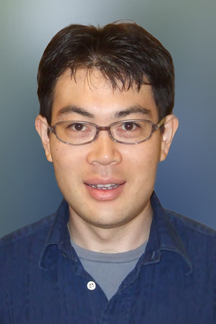Scientists Discover How Two Proteins Help Keep Cells Healthy
By Ariel Whitworth and Mika Ono
Scientists at The Scripps Research Institute (TSRI) have determined how two proteins help create organelles, or specialized subunits within a cell, that play a vital role in maintaining cell health. This discovery opens the door for research on substances that could interfere with the formation of these organelles and lead to new therapies for cancer.
The study, published online ahead of print on December 2, 2012, by the journal Nature Structural & Molecular Biology, focuses on the structure and function of the two proteins, ATG12 and ATG5. These proteins need to bond correctly to form an organelle called the autophagosome, which acts like a trash bag that removes toxic materials and provides the cell with nutrition through recycling.
“Our study focuses on one of the big mysteries in our field,” said Assistant Professor Takanori Otomo, the TSRI scientist who led the effort. “These proteins are linked, but no one has explained why clearly. We’re very excited to have determined the structure of these linked proteins so that the information is available to do the next level of research.”
Asking Questions, Finding Answers
At the beginning of the study, Otomo and colleagues knew that many proteins work together to form autophagosomes as part of the process known as autophagy, which breaks down large proteins, invasive pathogens, cell waste, and toxic materials. As part of this process, one key protein, LC3, attaches to a lipid, or fat molecule, on the autophagosome membrane. Yet LC3 cannot attach to a lipid without the help of ATG12 and ATG5, and a cell will only form an autophagosome if the linkage, or conjugate, between these two molecules has been established.
Otomo and colleagues set out to determine the shape of the ATG12-ATG5 conjugate, and to find out why it was needed for LC3 lipidation.
Using a method called X-ray crystallography, the scientists were able to unveil the details of this conjugate. When ATG12 and ATG5 come together, they form a rigid architecture and create a surface area that is made up of evolutionarily conserved amino acids and facilitates LC3 lipidation. The researchers confirmed this finding by mutating those conserved amino acids , which prevented an autophagosome from forming.
Otomo and colleagues also identified a surface on the ATG12-ATG5 conjugate that binds to ATG3, another enzyme required to attach LC3 to the lipid.
Toward Better Understanding and New Cancer Treatments
With this new knowledge, the researchers hope to design molecules that inhibit autophagosome formation, a direction of research that has implications for cancer treatment. A drug that directly inhibits ATG3 binding, for example, could be used in coordination with current therapies to make cancer treatments more effective, preventing a cancer cell from recycling nutrients and prolonging its survival.
“Ultimately, we’d like to understand the molecular mechanisms of each step of autophagy,” he said, “As we make progress toward this goal, we will have a better idea of how to manipulate the pathway for therapeutic purposes. This field is still young and there are a lot of unknowns. This work is just the beginning.”
In addition to Otomo, authors of the paper, “Structure of the human ATG12~ATG5 conjugate required for LC3 lipidation in autophagy,” include Chinatsu Otomo and Zoltan Metlagel of TSRI, and Giichi Takaesu of Keio University in Tokyo, Japan. For further information on the paper, see http://www.nature.com/nsmb/journal/vaop/ncurrent/full/nsmb.2431.html.
This research was supported by National Institutes of Health (NIH) grant GM092740 and by funds from Japan Science and Technology Agency through the Keio Kanrinmaru Project.
Send comments to: press[at]scripps.edu














